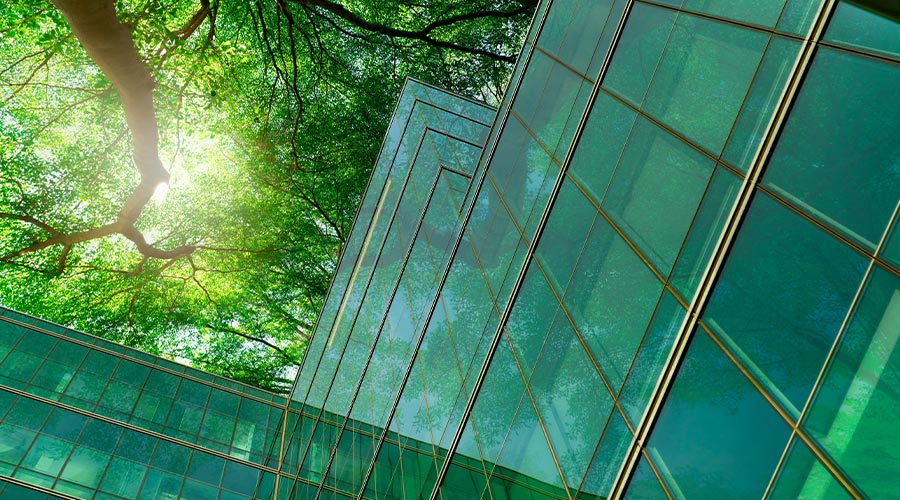
The U.S. Green Building Council (USGBC) has announced the 2024 cohort of 12 cities selected to participate in its LEED for Cities Local Government Leadership Program. The program helps local governments set goals, collect data, and validate performance against sustainability and quality of life metrics using the LEED for Cities rating system, revolutionizing the way cities and communities are planned, developed, and operated to improve their overall sustainability and quality of life.
"This year’s leadership cohort brings together diverse local governments from across the U.S. to strengthen sustainability, resilience, human health, and social equity outcomes within their communities,” says Peter Templeton, president and CEO, USGBC. “We congratulate this year’s cohort and express our gratitude to Bank of America for their ongoing partnership in supporting the work of these local sustainability leaders.”
LEED for Cities and Communities is a key component of regional climate action plans. Program participants evaluate access to green spaces, public health indicators, climate action and resilience, and environmental justice. The cities participating in this year’s cohort represent diverse communities across the country, each facing unique challenges and utilizing tools like LEED to meet the needs of their residents.
“Through decades of leadership, the U.S. Green Building Council has transformed the way we design and operate buildings and spaces that form the fabric of where we work and live,” says Alex Liftman, global environmental executive at Bank of America.
Through Bank of America’s support of the LEED for Cities program, more than 100 local governments have validated processes on sustainability, resilience and equity goals since its inception. The program attracts diverse participants – from local governments using the framework to engage stakeholders and initiate plans to those seeking recognition for their accomplishments against established goals.
The program provides peer-to-peer networking opportunities, technical assistance, and access to educational resources, covering fees for USGBC membership, registration, and certification reviews for participating governments.
The 2024 cohort of cities represents a combined population of nearly five million people. The cities are:
• Boca Raton, Florida
• Carrollton, Texas
• Coral Springs, Florida
• El Paso, Texas
• Gainesville, Florida
• Gary, Ind.
• Jacksonville, Florida
• La Crosse, Wisconsin
• New Orleans
• Overland Park, Kansas
• Philadelphia
• St. Petersburg, Florida
In addition to the national leadership cohort, the Local Government Leadership Program includes regional leadership summits intended to deepen engagement with local governments on a range of green building and sustainable development topics. It has also established LEED for Cities Accelerators to assist local governments new to LEED for Cities with collecting data, benchmarking sustainability performance, and navigating the certification program.
Cities and counties are at the forefront of climate change, bearing the brunt of preparing for and adapting to more extreme weather events. To support local governments, the federal government has provided funding opportunities through the Inflation Reduction Act (IRA) to help localities with their resilience planning. Because the Local Government Leadership Program helps officials organize their environmental data, localities that have participated in the LEED for Cities and Communities program have had more success in winning grants and funding to support their work. Certification helps local governments achieve meaningful results, such as attracting new economic activity, reaching global climate goals, improving air and water quality, and enhancing quality of life for all.
Bank of America has been a partner of USGBC and a member since 1997. Since 2011, it has provided over $4.3 million in total grant funding to USGBC. Bank of America has also integrated sustainability into its building design standards since 2005 and used those standards to deliver workspaces that are LEED-certified across its global footprint. Bank of America has more than 18 million square feet of certified green building space (26 percent of its corporate real estate) and aims to achieve certification for 40 percent of its space by 2030.

 The Down and Dirty on Cleaning in Virus Season
The Down and Dirty on Cleaning in Virus Season How Surfactant Use is Expanding in Commercial Cleaning
How Surfactant Use is Expanding in Commercial Cleaning